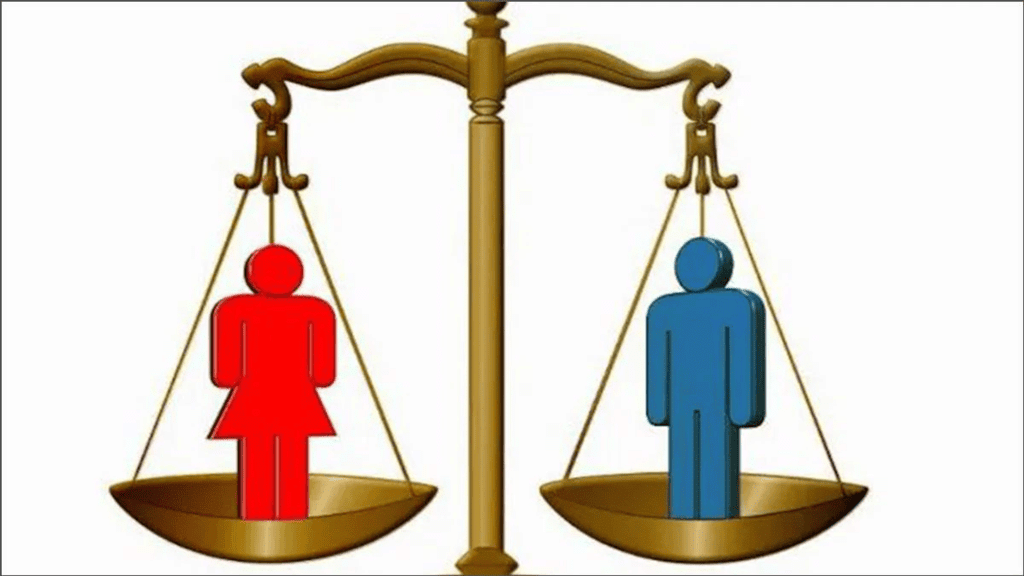Class 7 Exam > Class 7 Notes > Social Studies (SST) Class 7 > Chapter Notes - Growing up as Boys and Girls
Class 7 Civics Chapter 4 Notes - Growing up as Boys and Girls
| Table of contents |

|
| Introduction |

|
| Growing up in Samoa in the 1920s |

|
| Growing up Male in Madhya Pradesh in the 1960s |

|
| Valuing Housework |

|
| Lives of Domestic Workers |

|
| Women’s Work and Equality |

|
Introduction
Gender identity is a crucial aspect of who we are. Society shapes our understanding of appropriate behavior for boys and girls, and these norms can vary across cultures. In many societies, men and women are valued differently, with women's roles and contributions often being seen as less important than men's. This leads to gender inequalities, particularly in the workplace.
 Gender Equality
Gender Equality
What is gender inequality?
Gender inequality means that boys and girls, or men and women, are not treated the same.
- Sometimes, people believe that one gender is better or more important than the other, which isn't fair.
- For example, in some places, girls might not get the same chances as boys to go to school, or women might not get paid as much as men for doing the same job.

- This happens because of the way people think about what boys and girls should do, even though both are equally important and should have the same opportunities.
- Gender inequality is when things are unfair just because of whether someone is a boy or a girl.
Growing up in Samoa in the 1920s
- The Samoan Islands are located in the southern part of the Pacific Ocean.
- In the 1920s, children in Samoan society did not go to school.
- Children learned household work and how to take care of children from older children and adults.
 Samoan Island
Samoan Island
- Fishing, being an important activity on the islands, was taught to young people to undertake long fishing expeditions.
- Babies were cared for by their mothers or other adults until they could walk, and then older children took over the responsibility.
- Boys started learning outdoor jobs like fishing and planting coconuts around the age of nine.
- Girls continued to care for small children or do errands for adults until they were teenagers.
- Once they became teenagers, girls had more freedom and participated in fishing trips, worked in plantations, and learned how to weave baskets.
- Cooking was done in special cooking-houses, with boys doing most of the work and girls helping with preparations.
Question for Chapter Notes - Growing up as Boys and GirlsTry yourself: At what age did boys in Samoan society start learning outdoor jobs like fishing and planting coconuts?View Solution
Growing up Male in Madhya Pradesh in the 1960s
- In the 1960s, boys and girls in a small town in Madhya Pradesh went to separate schools from class VI onwards.
- The girls' school had a central courtyard where they played in seclusion and safety.
- The boys' school did not have a courtyard, but had a big playground attached to it.

- After school, the boys watched as the girls walked home in groups, while the boys used the streets to be idle and play. The girls feared being teased or attacked as they walked down the streets.
- Growing up can differ for each child in various ways, and our own experiences may not be representative of others.
- Societies make clear distinctions between boys and girls from a young age, such as giving them different toys to play with. For instance, boys are given cars while girls are given dolls.
- Toys, clothing, and expectations for behavior all contribute to telling children that they have specific roles to play as they grow up.
- Men and women do not have equal status in society, and this is evident in the different work they do.
Valuing Housework
- Women are mainly responsible for housework and caregiving tasks globally.
- Their work is not recognized as work and is undervalued by society.
- Society assumes that caregiving comes naturally to women and does not need to be paid for.
- Valuing housework is an important element which needs to be propagated in society.
- A number of housework actually involves many different tasks. The work is strenuous and physically demanding.
 Women- The Heart of Every Home
Women- The Heart of Every Home
Lives of Domestic Workers
- Many homes employ domestic workers, mostly women, to do housework such as cleaning, cooking, and taking care of children or the elderly.
- Sometimes, even young girls or boys are employed for this work
- Domestic work is undervalued and poorly paid.
- Domestic workers often work long hours, from early in the morning to late at night.
- Employers often do not show respect to domestic workers.

- The experience of a domestic worker in Delhi included being shouted at by the employer, not receiving enough food, and not being allowed to wear shoes in the house.
- Housework involves physically demanding tasks such as fetching water, carrying heavy loads, and standing for long hours.
- Domestic workers are often required to work barefoot inside the employers' houses, even in freezing winter conditions.
- Women spend more time working, both inside and outside the home than men, and have less leisure time.
- According to a study by the Central Statistical Organization of India, an average woman spends about 30-35 hours per week doing household work, while a man spends 2-4 hours. The time spent on their paid work is much less than their unpaid or household work.
Question for Chapter Notes - Growing up as Boys and GirlsTry yourself:What is one way in which boys and girls in Madhya Pradesh in the 1960s were treated differently?
View Solution
Women’s Work and Equality
 Women's Work and Equality
Women's Work and Equality
- Women's household and care-giving work is undervalued and is part of a larger system of inequality between men and women.
- Since this issue cannot be solved at individual level, government action is needed to address this issue.
- The Constitution promotes equality and prohibits discrimination based on gender.
- Inequality between the sexes still exists.
- The government is committed to understanding the reasons for this inequality and taking steps to address it.
- For example, the burden of child-care and housework falls on women and girls, affecting their education and employment opportunities.
- To combat this problem, the government has established anganwadis or child-care centers in villages and made it mandatory for organizations with more than 30 women employees to provide creche facilities.
- These measures help women take up employment and allow more girls to attend school.
The document Class 7 Civics Chapter 4 Notes - Growing up as Boys and Girls is a part of the Class 7 Course Social Studies (SST) Class 7.
All you need of Class 7 at this link: Class 7
|
62 videos|336 docs|46 tests
|
FAQs on Class 7 Civics Chapter 4 Notes - Growing up as Boys and Girls
| 1. What were some of the challenges faced by children growing up in Samoa in the 1920s? |  |
Ans. Children growing up in Samoa in the 1920s faced various challenges, including limited access to education, traditional expectations regarding gender roles, and cultural practices that influenced their daily lives. The impact of colonial rule also affected their social and economic conditions.
| 2. How did growing up male in Madhya Pradesh during the 1960s differ from growing up female? |  |
Ans. Growing up male in Madhya Pradesh in the 1960s often meant more freedom and opportunities for education and employment compared to females, who were typically expected to focus on household duties. Boys were encouraged to pursue their studies and careers, while girls faced societal pressure to conform to traditional roles.
| 3. Why is housework often undervalued in society? |  |
Ans. Housework is often undervalued in society because it is seen as women's work and is typically unpaid. This perception leads to a lack of recognition for the effort and time involved in maintaining a household, despite its critical importance for the well-being of families and communities.
| 4. What are some common experiences of domestic workers in India? |  |
Ans. Domestic workers in India often face challenges such as low wages, long working hours, lack of job security, and limited rights. Many work in informal settings without contracts, making them vulnerable to exploitation and abuse. Their contributions are crucial, yet they often remain unrecognized and marginalized.
| 5. How does women’s work contribute to achieving equality in society? |  |
Ans. Women’s work, both paid and unpaid, plays a vital role in achieving equality by challenging traditional gender roles and promoting economic independence. Recognizing and valuing women’s contributions can lead to greater social change, help empower women, and encourage equitable participation in all aspects of life.

|
Explore Courses for Class 7 exam
|

|
Signup for Free!
Signup to see your scores go up within 7 days! Learn & Practice with 1000+ FREE Notes, Videos & Tests.
Related Searches


















